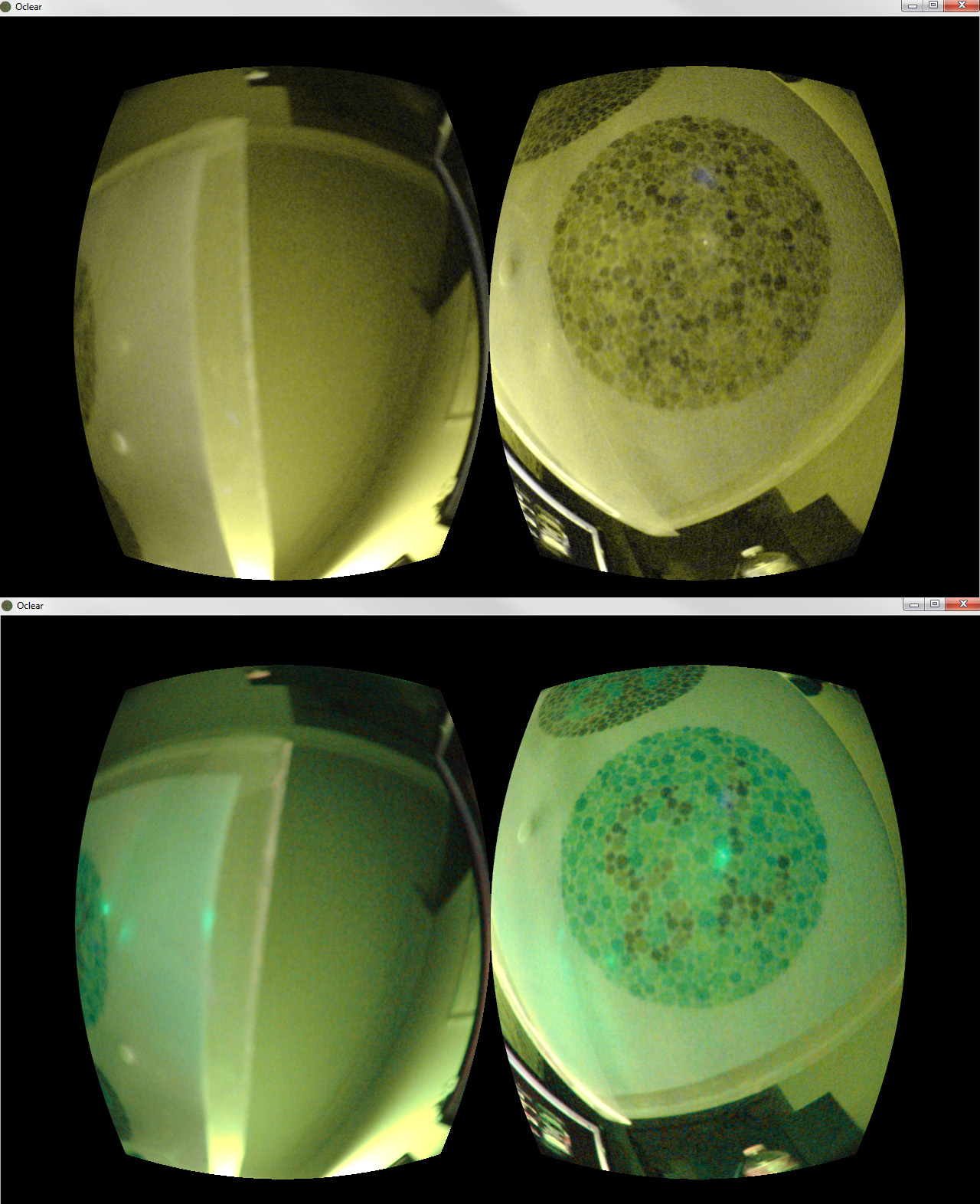Oclear
Goal
Apply daltonisation techniques in real-time to an augmented reality view
Key success factors
- Real-time
- “Natural looking” - ie. With least amount of distortion to existing colours possible
- Scores appreciably higher in colour differentiation and colour recognition
The goal is not for the camera images to be accurate, just the transformation.
Methods
Augmented reality
Using video pass-through, an Oculus Rift DK1 with two Playstation Eye cameras mounted.
Daltonisation
Initial tests using the Brettel et al. simulation and daltonisation algorithms were positive, but conclusions led to the simulation not being entirely accurate, thus skewing the final daltonised image unnecessarily. Future algorithms should begin with the simulation techniques detailed by Capilla et al., corresponding-pair procedure, and combining it with the daltonisation techniques of Brettel et al. by using the difference between the original and simulation to distinguish areas of confusion.
Testing
Tests take place using a combination of the Farnsworth-Munsell D15 Color Vision Test, the Ishihara Colour Plate Test and general image comparisons, with and without transformation.

Top: CVD simulation. Bottom: Early isolated daltonisation testing.
Short presentation: Presentation slides at Prezi
Worlds in Miniature
Why some people refuse to call some games "games"